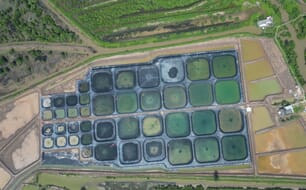Farmers need to be able to afford the costs of production and regulations, and still be able to make a profit and re-invest.
One of the main economical challenges is that fish farmers often do not have the right business training, as they get into farming as they love working with aquatic animals.
Government regulations are also becoming more intense and can be a barrier to the economic growth of farming. They tend to be increasing in costs and therefore taking more money away from farmers that would have been used for innovation.
During Dr Engle's talk on the costs of US health regulations to fish farmers, she noted that average regulatory costs for the US baitfish industry is a huge $150,000 per farm per year and $3,000 per acre.
The survey of US baitfish farms in 13 states conducted by Dr Engle and Jonathan van Senten also revealed that the amount and cost of health regulations on farms varies greatly in number by state.
Some states also charge regulations frequently and 29 per cent of the farms surveyed said they never receive notice of regulation changes.
This means that some farms are spending a large proportion of their time and money on checking regulations.
Similarly, unexpected regulation changes account for around 23 per cent of total coats and foregone sales for around 60 per cent.
The health regulations are also very costly for the actual preperation and transporting of fish to laboratories for testing.
The average fish health testing per farm is $7,250 and a maximum of $230,000 was also recorded in the survey.
Very accessive costs are being paid by the baitfish industry to try and show their fish are healthy so they can be sold in other states, explained Dr Engle.
Regulations are therefore constraining the growth and development of the industry.


